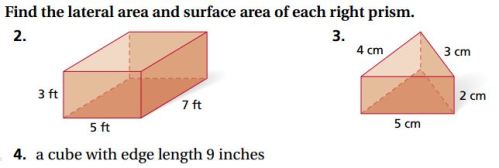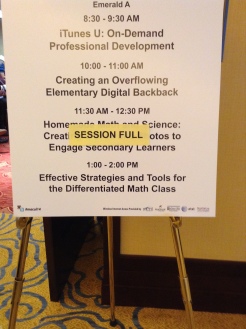A New York Times article by Elizabeth Green has made its social media rounds lately. “Why Do Americans Stink At Math?” has been tweeted/shared a couple million times by now, with good reason.
It’s actually a really good article with some good story-telling and relevant history, and all the data and examples to back up the title. It’s worth a read. (It isn’t a quick read, mind you, but a good read.)
As far as I can tell, the thesis of the article is in the middle of the piece:
“The new math of the ‘60s, the new new math of the ‘80s and today’s Common Core math all stem from the idea that the traditional way of teaching math simply does not work.”
The “traditional way” that Ms. Green speaks of is summed up a bit later in the piece.
Most American math classes follow the same pattern, a ritualistic series of steps so ingrained that one researcher termed it a cultural script. Some teachers call the pattern “I, We, You.” After checking homework, teachers announce the day’s topic, demonstrating a new procedure: “Today, I’m going to show you how to divide a three-digit number by a two-digit number” (I). Then they lead the class in trying out a sample problem: “Let’s try out the steps for 242 ÷ 16” (We). Finally they let students work through similar problems on their own, usually by silently making their way through a work sheet: “Keep your eyes on your own paper!” (You).
Green goes on to say that quite often teachers recognize the limitations of the traditional model, but have a hard time reforming it largely because of poor resources and ineffective training. From later in the piece:
Sometimes trainers offered patently bad information — failing to clarify, for example, that even though teachers were to elicit wrong answers from students, they still needed, eventually, to get to correct ones. Textbooks, too, barely changed, despite publishers’ claims to the contrary.
So, here we go. Sounds like a big problem, right?
Well…
I’m not that concerned. Ya know why?
First off, I don’t want to give the impression that I think that Green is writing untruths or is exaggerating. That isn’t where I’m taking this. American math education needs some serious work. But see, that’s where I get encouraged.
Let’s look at a specific bit of content. How about volume and surface area of prisms?
So, my textbook provides this:
These practice problems fit in with the “I, We, You” model that Ms. Green described in her article. Right on cue, the textbook appears to be pitching to our education system’s weaknesses.
But those weaknesses have entered a brave new world where teachers who have found models that work are not only willing, but also able to share them freely for anyone and everyone who might be looking.
For example:
Andrew Stadel’s “Filing Cabinent” is, by content standards, just another prism surface area problem. But, the situation he sets up is anything but ordinary.
Timon Piccini’s “Pop Box Design” asks a relatively simple question in a context that is approachable by practically everyone.
Dan Meyer’s “Dandy Candies” pushes the envelope on video quality, pushes the same content, and includes it in a blog post that discusses a competitor to “I, We, You.”
All those fantastic resources are available… for free. And the creators can be reached if you have a question about them.
A movement has begun. An (ever-growing) group of math teachers decided that it was one thing to discuss reforming math education and it was quite another to effectively reform math education. The group is getting larger. It’s inclusive. It’s welcoming. It’s free to join. And it doesn’t expect anything from those who join. Everyone does what they are able. Some share lots. Some steal lots. Some do both. The bank of resources is growing.
And this isn’t legislated reform. There is a genuine desire for this. I spoke in Grand Rapids, MI this past spring and was amazed that the crowd that was willing to gather to hear someone talk about reforming math education. Nearly 100 folks crammed into a room to have, what ended up being a rather lively, discussion about how to engage all learners, push all learners, and keep as many learners as possible interested in meaningful mathematical tasks.
So, Ms. Green is certainly right. Americans stink at math. But there is a growing group of teachers who are aware of the problem, interested in seeing it solved, and now, more than ever, there are places they can turn to, people they can reach out to (and who are reaching out to them). And it is all available for free on technology that practically everyone already has.
So, forgive me, but I am quite optimistic about where this might take us.


Great read! It resonated strongly with me as we face a very similar challenge here in Australia. We are finding that our students perform relatively well with skills practice but struggle greatly with problem solving.
I think the tides are turning and more and more educators are moving toward this “newer” way of teaching maths.
The I, We, You seems to be the latest thing here, when done “well” it can lift lower performers to benchmark in the short term but when done not so well it can be a disaster. I will try and find an article for a US school where they have ditched the I, We, You approach and followed a more problematised curriculum. Sounds like their student achievement has been sustainably improving.
That depends on who you ask and which assessment you look at. There are a lot of reasons to see some very real progress. There are some who are never satisfied. I supposed that’s always the way of it, isn’t it?
I loved your response to the article. I suspect we’re at the beginning of a wonderful sea change. With the online math community, with the Common Core… You captured my hopes so beautifully. I am going to share this with my new department head who also read the Green article.
Let me know the response. I hope that my enthusiasm and optimism are still this strong in February or March, but I’m with you: There are lots of reasons to see some serious bright side. Here in Michigan, we have a #MichED community that is doing some wonderful things, too and providing a ton of positive energy to move things in the right direction.
Pingback: Why I'm not THAT worried about the future of ma...
Pingback: Math Teachers At Play: Blog Carnival Edition # 77 | Math = Love